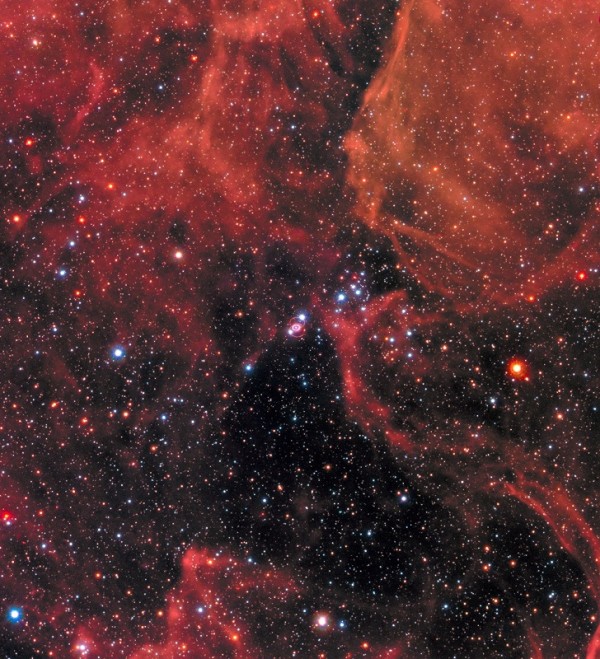By Ana Verayo, | February 25, 2017

This Hubble Space Telescope image shows Supernova 1987A within the Large Magellanic Cloud, a neighboring galaxy to our Milky Way. ( NASA, ESA, R. Kirshner, and M. Mutchler and R. Avila)
NASA has marked the 30th anniversary of the sighting of one of the brightest supernova ever seen from Earth. This massive star dying in the Large Magellanic Cloud was seen for the first time on February 23, 1987, from the Southern Hemisphere.
This new bright light can be seen from the skies for months, peaking in brightness in May before it fades away. This majestic supernova is known as SN 1987A, and this powerful stellar blast occurred some 166,000 light years away. This discovery helped astronomers understand the process of stars dying and the stages that follow it.
Like Us on Facebook
According to Robert Kirshner from the Harvard-Smithsonian Center for Astrophysics, this 30-year observation of the SN 1987A is very crucial for astronomers to study the last stages of a star. Decades ago, supernovae understanding was so limited since there were no events that could be observed with decent resolution. SN 1987A is in the Tarantula Nebula near the Milky Way galaxy, and it is the brightest supernova ever seen from Earth since 1604.
At first, ground-based telescopes were only able to see remnants of a small explosion. In 1990, NASA's Hubble Space Telescope was able to capture high-resolution images of the supernova, revealing stunning detail of the dying star's structure. Apart from Hubble, other telescopes like the Chandra X-ray Observatory and the ALMA (Atacama Large Millimeter/submillimeter Array) were also able to capture this supernova.
These images taken over 30 years reveal a unique ring-like structure from the dying star that was ejected some 20,000 years before the real explosion. Besides this main ring from the supernova remnant, there are also two rings that give SN 1987A its unique shape.
These rings were so bright that they were illuminated twice in a span of several years. The first was from the initial supernova explosion and the second one was in 2001 due to shock waves from the explosion reaching the other rings.
Astronomers were able to observe these rings over time in different light wavelengths. This helped them determine the composition and structure of the star, which used to hold 18 solar masses or 18 suns.
More interestingly, a few hours before the first visible light from the SN 1987A explosion, neutrino detectors deep underground in Japan and the United States detected a massive wave of neutrinos from this star. This means that a neutron star or a black hole suddenly burst when the star exploded. Despite this, the core of this supernova remnant was never detected or found.
-
Use of Coronavirus Pandemic Drones Raises Privacy Concerns: Drones Spread Fear, Local Officials Say

-
Coronavirus Hampers The Delivery Of Lockheed Martin F-35 Stealth Fighters For 2020

-
Instagram Speeds Up Plans to Add Account Memorialization Feature Due to COVID-19 Deaths

-
NASA: Perseverance Plans to Bring 'Mars Rock' to Earth in 2031

-
600 Dead And 3,000 In The Hospital as Iranians Believed Drinking High-Concentrations of Alcohol Can Cure The Coronavirus

-
600 Dead And 3,000 In The Hospital as Iranians Believed Drinking High-Concentrations of Alcohol Can Cure The Coronavirus

-
COVID-19: Doctors, Nurses Use Virtual Reality to Learn New Skills in Treating Coronavirus Patients







